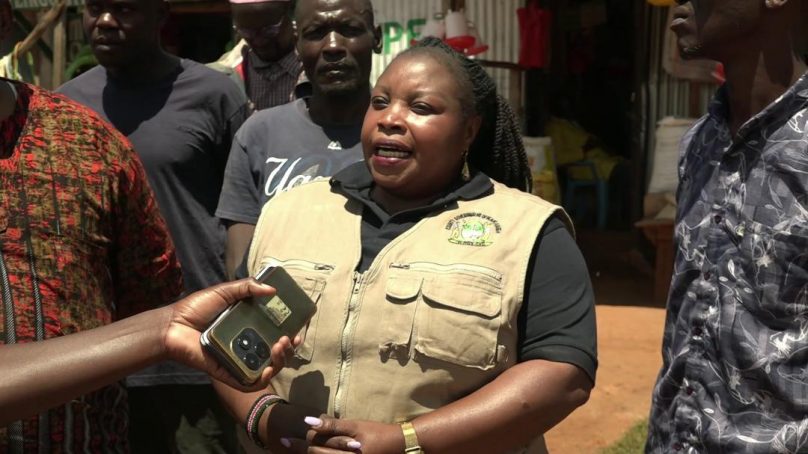
Discovery of massive deposits of gold in western Kenya’s Kakamega County continues a century-long history of gold mining in Lake Victoria Basin, which shares the geological characteristics with the mines in eastern Uganda and the Democratic Republic of Congo (DRC) – a leading gold producer in the world.
While mineral exploration in Kenya gets thee least allocation in thee national budget, leaving the sector to artisanal miners, the prospects of gold mining in western Kenya has evermore held potential as demonstrated by the 1-2 tonnes per annun of gold that accrues from artisanal mining.
Prospect of existence of El Dorado (a mythical city of gold buried underground).in Kakamega is expected to force a rethink in Kenya economic policies. Kenya’s gold mining areas are Kakamega, Busia, Migori, Narok, Turkana and West Pokot.
In a series of articles on gold and rare earth mineral wealth in East Africa, Ugandan environmentalist, Prof Oweyegha-Afunaduulah, has often blasted East African governments for exporting slave labour to the Middle East rather than minerals. He argues that the value of the mineral wealth of tiny Busoga District in eastern Uganda is enough to run Africa’s 54 wobbly economies.
Busoga in neighbouring Uganda – less than 100 kilometres west of Kakamega – holds of $17 trillion (Ksh2.2 zillion) worth of gold, according to studies conducted in 2022.
“One thing is true. The Busoga of ‘too much poverty is characteristic of (Uganda’s ruling) National Resistance Movement Era’. The Busoga of the distant past was next only to Buganda in prosperity. But we are talking of financial wealth. Busoga was financially rich. Today, we know that Busoga is the wealthiest part of Uganda and, reportedly in the whole of East and Central Africa in terms gold – much richer than DRC,” Prof Oweyegh-Afunaduulah writes.
In addition, he observes, “The East African Standard of July 27 2022, revealed, in its headline article “Trillions in Busoga gold? How about we bank oil billions first?”, that Busoga gold is worth $17 trillion. However, President Tibuhaburwa Museveni once told the Basoga to forget about gold and concentrate on farming. Indeed, his government has socioeconomically promoted the growing of sugarcane, which has spread throughout Busoga as if it will make the Basoga richer far more quickly than gold would.”
Against the foregoing, Executive Committee Member (CECM) for Environment in Kakamega County Peninah Mukabane, now wants the British firm, Shanta Gold Limited, to conduct civic education for residents of Ikolomani before embarking on large-scale gold mining.
Addressing the media at Isulu, the CECM said that public participation has not been sufficiently done for the project that is expected to have a massive economic and social impact on local communities, some of whom will have to be relocated to pave way for the company to begin groundwork.
Early this week, Shanta Gold Limited announced discovery of huge deposits of gold in western Kenya, signalling the beginning intensified hunt for the precious minerals underground.
Kakamega was once a major gold producer in Kenya in the era preceding the 1960s before the only known site for commercial gold mining at Rosterman – just three kilometres west Kakamega town – closed shop.
Ever since the closure of the Rosterman Goldmine, Kakamega County in particular – and western Kenya in general – has been the source of gold from artisanal mining, hence the El Dorado nickname that stands for the buried Golden City. It is generally believed a lot wealth is buried underground in the region.
According to Ms Mukabaneh, at least 340 acres of land is needed by the company. She criticised Shanta Gold Limited for failing to provide the county government with a resettlement plan for that people will be forced to relocate, compensated and the rate.
The gold find anchors on a major economic breakthrough as the discovery is its largest gold deposits in more than a century. The value of the deposits is estimated to be Ksh683 billion ($5.29 billion).
Shanta Gold Limited confirmed 1.27 million ounces of gold at its Isulu-Bushiangala underground project – some 15 kilometres southwest of Kakamega town – marking a significant milestone for the country’s mining sector.
An Environmental Impact Assessment (EIA) report by the National Environment Management Authority (NEMA), shows the company will need roughly 340 acres in Kakamega South Sub-County for thee large-scale underground mining.
A Gold said the project will use advanced Long Hole Open Stoping technology to extract ore while minimising surface disruption. In a statement that announced the discovery, the company said the ultimate goal of the project is economic and social development of the region’s and national economies.
“The project is aimed at obtaining the required authorisation to mine the Isulu-Bushiangala gold resources for economic purposes. This may lead to the enhancement of local economic development through job and business opportunities and significant contributions to the government of Kenya through taxes, royalties and revenue contributions, which are likely to transfer into the local and regional economic growth,” the statement said.
The infrastructure needed will include 1,500-tonne-per-day processing plant, a 12-megawatt power station and a tailings storage facility. The mine’s construction is projected to cost between Ksh22 billion and Ksh27 billion, with an operational life of at least eight years.
The CECM also expressed concerns that since people live in the area and their children attend nearby schools, those to be relocated should be given a disturbance allowance.
Mukabane also noted that proper mechanisms should be put in place by Shanta Gold Limited to address the possibility of boreholes drying up due to extensive digging involved in the process of mining Gold.
“On behalf of the governor, I say the project should be put on hold in the meantime. Residents should be sensitized and civic education should be done exhaustively so that they can be called for public participation,” the CECM observed.
She noted that the company’s activities will affect more than 20,000 artisanal miners in Ikolomani who rely on small-scale mining to make a living and appealed to Shanta Gold Limited to come up with a plan to cushion them from the effects of its large-scale operations.
The Chairperson of the Kakamega County Miners Association, Patrick Ligami, asked the national government to hasten the issuance of mining permits to artisanal miners, which has been delayed despite having met all the conditions and undergone all the required processes.
- A Tell Media / KNA report / By Moses Wekesa and Selphine Katumanga







